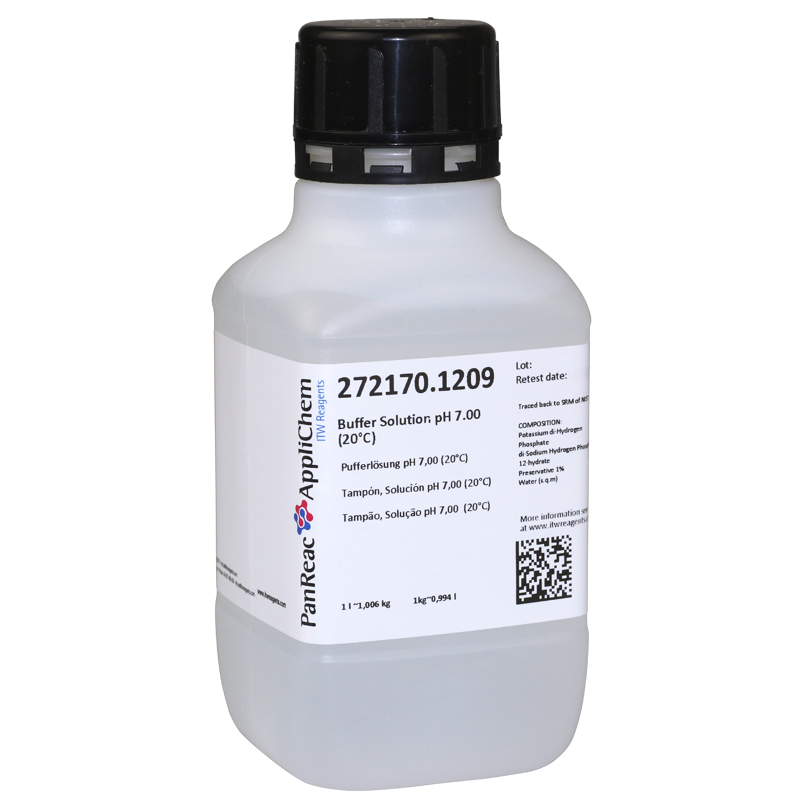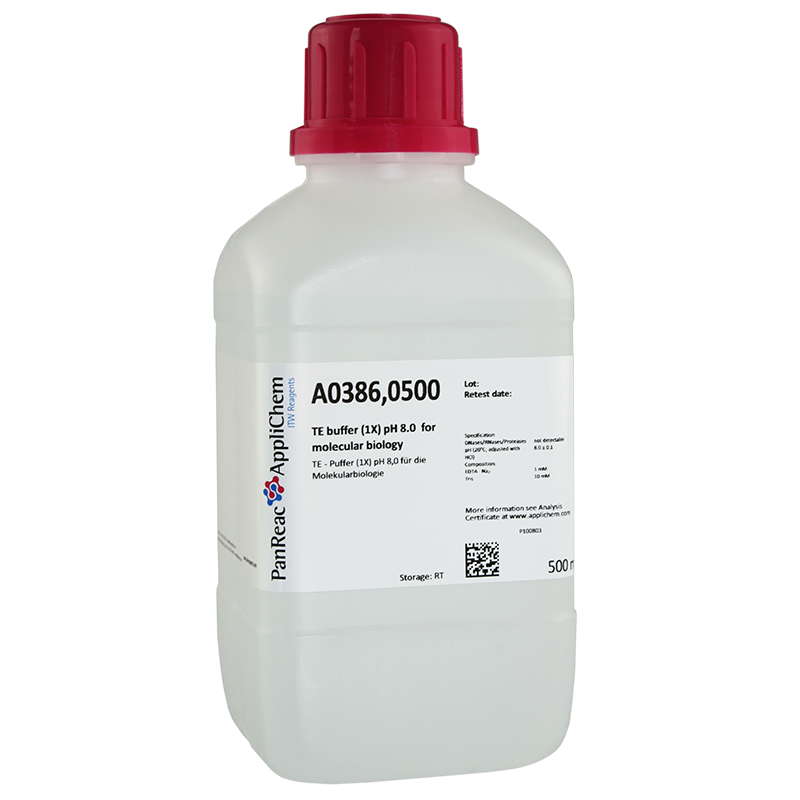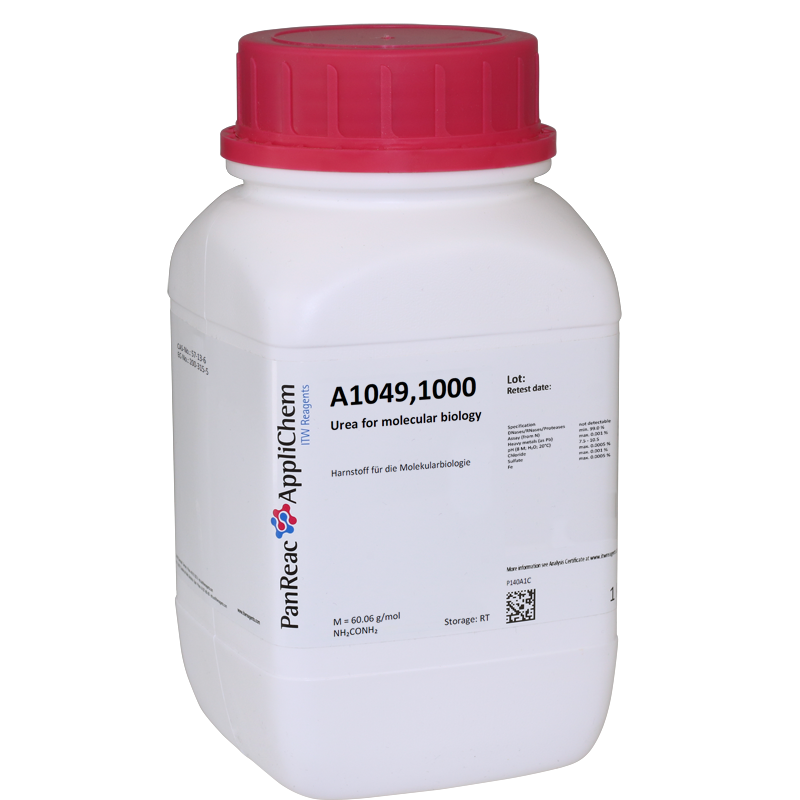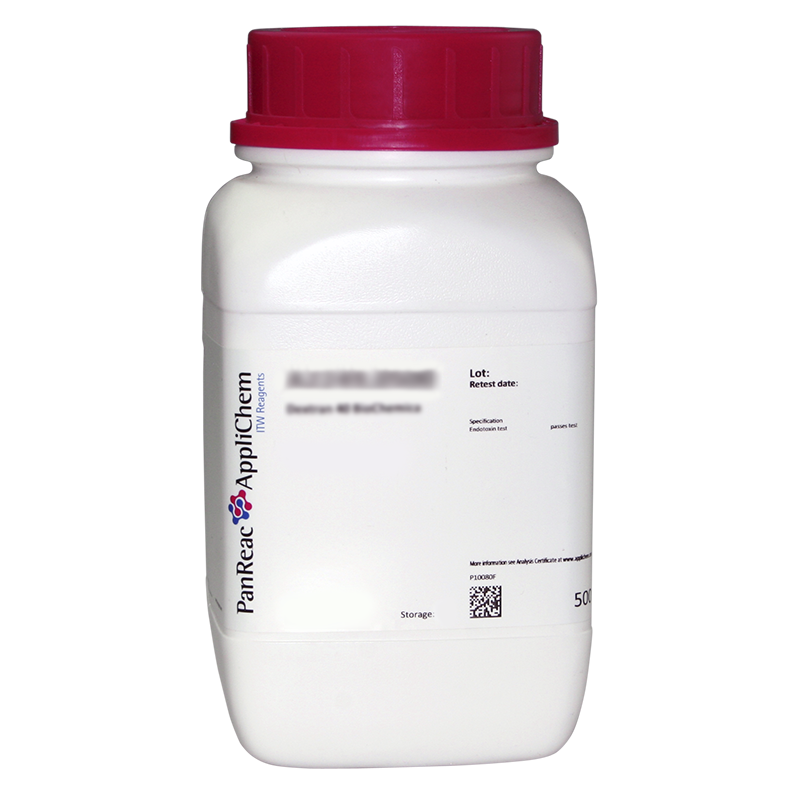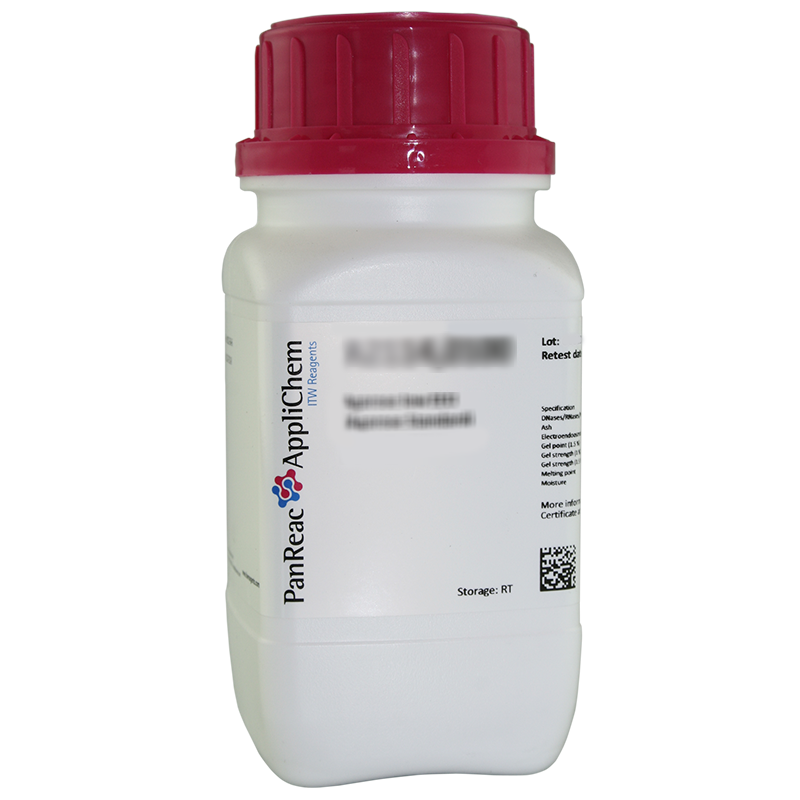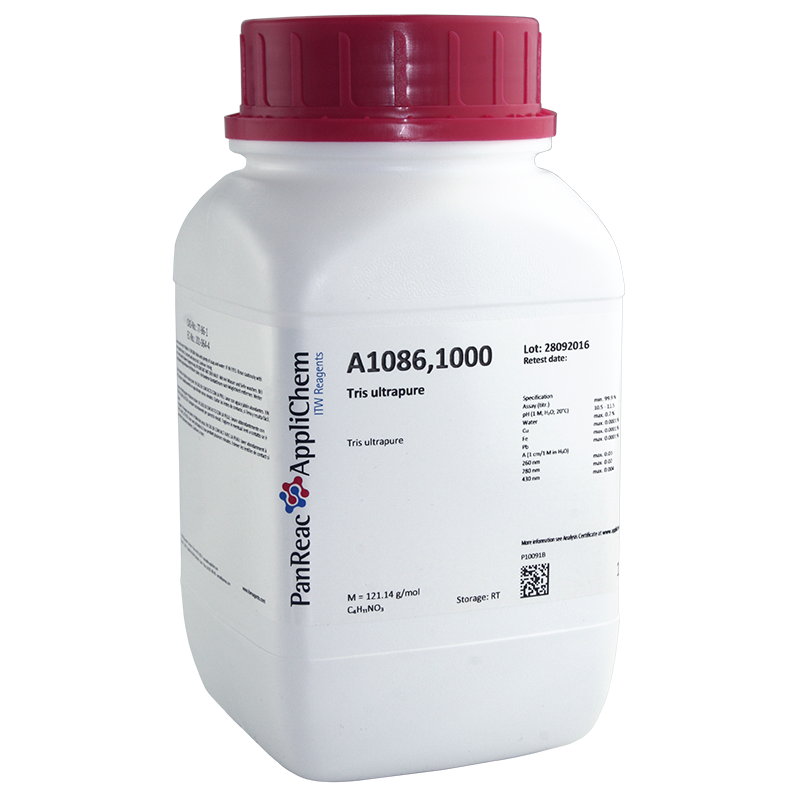Featured products
127 products available
- 2-Amino-2-Methyl-1-Propanol for buffer solutions A0838,4000 · 124-68-5
- ACES for buffer solutions A1060,1000 · 7365-82-4
- Bis-Tris for buffer solutions A1025,0500 · 6976-37-0
- Bis-Tris for buffer solutions A1025,0250 · 6976-37-0
- Bis-Tris for buffer solutions A1025,1000 · 6976-37-0
- Buffer Solution pH 1.00 (20°C)272580.1211 ·
- Buffer Solution pH 10 for volumetric analysis281730.1211 ·
- Buffer Solution pH 10.00 (20°C)272584.1211 ·
- Buffer Solution pH 10.00 (20°C)272584.1209 ·
- Buffer Solution pH 10.00 (20°C) (blue colour)273618.1211 ·
- Buffer Solution pH 11.00 (20°C)272585.1211 ·
- Buffer Solution pH 12.00 (20°C)272586.1211 ·
- Buffer Solution pH 12.00 (20°C)272586.1209 ·
- Buffer solution pH 12.454 277089.1209 ·
- Buffer Solution pH 2.00 (20°C)272581.1209 ·
Buffers
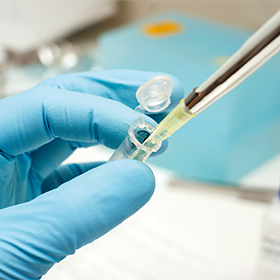
A buffer is a solution that can resist significant changes in pH levels upon the addition of small amount of acid or base. It can neutralize small amounts of added acid or base, thus maintaining the pH of the solution relatively stable. Buffer solutions are also known as pH buffers.
Composition of a buffer
A buffer solution is a mixture of a weak acid and its conjugate base or a weak base and its conjugate acid (see also more information on our acids & bases page).
Examples of buffer solutions are:
- Acetate buffer: acetic acid/sodium acetate (CH3COOH)/CH3COONa), pH ~ 4.7
- Ammonia buffer: ammonia/ammonium chloride (NH3/NH4Cl), pH ~ 9.3
- Hydrogen carbonate (bicarbonate) buffer: carbonic acid/sodium hydrogen carbonate (H2CO3/NaHCO3), pH ~ 6.4
- Hydrogen carbonate (bicarbonate) buffer: sodium hydrogen carbonate/carbonate (NaHCO3 / Na2CO3), pH ~ 10.3
- Phosphate buffer: sodium dihydrogen phosphate/disodium hydrogen phosphate (NaH2PO4/Na2HPO4), pH ~ 7.2
Buffers can also be made by starting with just weak acid and then neutralizing a portion of that weak acid with a strong base (achieving the mixture of weak acid and its salt by neutralization).
pH of a buffer
A buffer can resist pH change because the two components (conjugate acid and conjugate base) are both present in appreciable amounts at equilibrium and are able to neutralize small amounts of other acids and bases (in the form of H+ and OH-) when they are added to the solution.
Acidic buffers
Acidic buffers are buffers that maintain a solution at pH below 7 and typically consist of a weak acid and one of its salts to provide the anion which acts as a base (its conjugate base). The function of the salt component is to act as a source of ions (a supply of extra A- by adding a soluble salt of HA which fully ionizes such as NaA).
They work because the dissociation of a weak acid is an equilibrium reaction,
HA ⇌ H+ + A-.
The conjugate base A- removes the added acid: when an acid is added the [H+] increases and these H+ react with the conjugate base (A-) to produce undissociated HA. The equilibrium shifts to the left (in accordance with Le Chatelier’s principle), removing most of the H+ ions. Since HA is a weak acid, the A- will tend to combine with any available H+ to form HA, thus the hydrogen ion (H+) concentration (i.e., the pH) will change only slightly.
The weak acid removes the added alkali: when an alkali is added the [OH-] increases. The small amount of H+ present reacts with the OH- to form H2O. The weak acid dissociates, causing the equilibrium to shift to the right to restore most of the H+ ions, so the pH tends to remain almost the same.
Basic buffers
Basic buffers are buffers that regulate the pH around values greater than 7 and typically consist of a weak base and a salt of its conjugated acid. Similarly, to acidic buffers, in basic buffers the weak base removes the added H+ and the conjugated acid removes added OH-.
Neutral buffers
They maintain a solution at pH value of around 7 and consist of polyprotic acid salts. In some cases, both the one that plays the role of the weak acid, and its conjugate base are salts from the partial neutralization of an acid that has several protons, such as phosphoric acid.
The pH of a buffer solution depends on the dissociation constant, Ka of the acid (or Kb of the base) as well as on the ratio of acid (base) and its conjugate base (acid) concentrations. This dependence is described by the well-known Henderson-Hasselbalch equation which is often used in chemistry and biochemistry to perform the necessary calculations in the preparation of buffer solutions for use in the laboratory, or in other applications. Using the Henderson-Hasselbalch equation, the exact amount of acid and conjugate base needed to obtain a buffer of a given pH can be determined.
Henderson-Hasselbalch equation (buffer equation)
For a weak acid HA and its conjugate base A−:
pH = pKa + log [HA]/[A-]
The Henderson-Hasselbalch equation is derived from the acid ionization (dissociation) constant:
Ka = [H+][A-]/[HA]
Taking the negative log on both sides of the equation gives:
-log Ka = -log [H+][A-]/[HA]
This corresponds to:
-log Ka = -log [H+] - log [A-]/[HA]
Relatively:
-log Ka = -log [H+] + log [HA]/[A-]
By definition:
-log Ka = pKa
-log [H+] = pH
Thus:
pKa= pH + log [HA]/[A-]
This equation is then arranged to:
pH = pKa + log [HA]/[A-]
Buffers are characterized by the pH range over which they can maintain a more or less constant pH and by their buffer capacity, the amount of strong acid or base that can be absorbed before the pH changes significantly.
Buffer range
Each conjugate acid-base pair has a characteristic pH range where it works as an effective buffer. Useful range is when pH = pKa ± 1. This represents the point in the titration that is halfway to the equivalence point. This region is the most effective for resisting large changes in pH when either acid or base is added. Based on the Henderson-Hasselbalch equation, it can be seen that the pH of the buffer solution is equal to the pKa value of the acid when the concentrations of the conjugate acid and conjugate base are approximately equal (within about a factor of 10 of each other), because log(1) = 0. In other words, the ratio of base-to-acid in the buffer, must be greater than 0.1 but less than 10. As soon as this ratio becomes outside this interval, then the buffer range has been exceeded, and we no longer expect the mixture to neutralize external acids/bases effectively.
Buffer capacity
Buffer capacity may be defined as the quantity of a strong acid or strong base that must be added to one liter of a solution to change it by one pH unit.
The amount of strong base (or acid) that can be absorbed by a buffer solution without significantly changing the pH is expressed by the buffer capacity. Although the useful pH range of a buffer depends largely on the chemical properties of the weak acid and weak base used to prepare the buffer (i.e., on Ka or Kb), its buffer capacity depends solely on the concentrations of the species in the buffer solution. Buffers with a high capacity contain large concentrations of buffering components (acid/conjugate base) that react with added H+ or OH- ions to maintain pH. Therefore, the concentrations of the acid and its conjugate base in a buffer will determine how much additional acid or base can be added to the solution before its buffering ability is exhausted. The higher the concentrations of acid and conjugate base, the larger the buffer capacity.
The buffer capacity equation is as follows:
β = Δn/ΔpH
Δn is the number of moles of acid or base added per liter of buffer solution
ΔpH is the change in pH
Applications
Buffer solutions are very useful in a wide range of applications where a stable pH is needed. They play an important role in maintaining pH in many chemical and biochemical processes.
Buffer solutions are widely used in industry. Industrial processes requiring buffer solutions include fermentation (e.g. in breweries or bakeries), control of dyeing processes in textile industries, manufacture of pharmaceuticals, manufacture of personal hygiene products and cosmetics, in the food industry to maintain the physical, chemical and microbiological stability of foods, etc. They are also used in chemical analysis and calibration of pH meters.
Important buffers
| BUFFER | COMPOSITION | BUFFER RANGE | pKa | pKb |
| Acetate | Acetic acid / Sodium acetate | 3.7 – 5.7 | 4.75 | |
| Ammonia | Ammonia / Ammonium chloride | 8.3 – 10.3 | 9.25 | 4.75 |
| Borate | Boric acid / Sodium hydroxide | 8.2 – 10.2 | 9.24 | |
| Citrate | Citric acid / Sodium citrate | 2.5 – 7.0 | 3.1 4.7 6.4 |
|
| Carbonate / Hydrogen carbonate | Sodium hydrogen carbonate / Sodium carbonate | 9.2 – 10.8 | 10.3 | |
| Phosphate (sodium) | Sodium di-hydrogen phosphate / di-Sodium hydrogen phosphate | 6.2 – 8.2 | 7.2 | |
| Phosphate (potassium) | Potassium di-hydrogen phosphate / di-Potassium hydrogen phosphate | 6.2 – 8.2 | 7.2 |
Some reagents used for buffer preparation
| PRODUCT CODE | PRODUCT NAME | CAS NUMBER |
| 361008 | Acetic Acid glacial 99.8%, CH3COOH 99.8%, for HPLC | 64-19-7 |
| 131008 | Acetic Acid glacial 99.7%, CH3COOH 99.7%, (Reag. USP, Ph. Eur.) for analysis, ACS, ISO | 64-19-7 |
| 141008 | Acetic Acid glacial 99.5-100.5%, CH3COOH 99.5-100.5%, (USP, BP, Ph. Eur.) pure, pharma grade | 64-19-7 |
| A3701 | Acetic Acid 100%, CH3COOH 100%, BioChemica | 64-19-7 |
| 122703 | Acetic Acid 96%, CH3COOH 96%, for analysis | 64-19-7 |
| 121556 | Acetic Acid 80%, CH3COOH 80%, for analysis | 64-19-7 |
| 196358 | Acetic Acid 36%, CH3COOH 36%, (USP-NF) pharma grade | 64-19-7 |
| 196884 | Acetic Acid 25%, CH3COOH 25% w/w pharma grade | 64-19-7 |
| 181009 | Acetic Acid 1 mol/L, CH3COOH 1 mol/L, (1N) volumetric solution | 64-19-7 |
| 131130 | Ammonia 30% (as NH3) for analysis, ACS | 1336-21-6 |
| 141130 | Ammonia 30% (as NH3) (USP-NF, BP, Ph. Eur.) pure, pharma grade | 1336-21-6 |
| 121129 | Ammonia 25% (as NH3) (Reag. USP, Ph. Eur.) for analysis | 1336-21-6 |
| 141129 | Ammonia 25% (as NH3) (BP, Ph. Eur.) pure, pharma grade | 1336-21-6 |
| 121128 | Ammonia 20% (as NH3) for analysis | 1336-21-6 |
| A2616 | Ammonia 10% (as NH3) for analysis | 1336-21-6 |
| 131121 | Ammonium Chloride 99.5%, NH4Cl 99.5%, (Reag. USP) for analysis, ACS, ISO | 12125-02-9 |
| 141121 | Ammonium Chloride 99.5-100.5%, NH4Cl 99.5-100.5%, (USP, BP, Ph. Eur.) pure, pharma grade | 12125-02-9 |
| 131015 | Boric Acid 99.8%, H3BO3 99.8%, for analysis, ACS, ISO | 10043-35-3 |
| 141015 | Boric Acid 99.5 - 100.5%, H3BO3 99.5 - 100.5%, (USP-NF, BP, Ph. Eur.) pure, pharma grade | 10043-35-3 |
| A2940 | Boric Acid 99.8%, H3BO3 99.8%, for molecular biology | 10043-35-3 |
| 131808 | Citric Acid anhydrous 99.5%, C6H8O7 99.5%, for analysis, ACS | 77-92-9 |
| 141808 | Citric Acid anhydrous 99.5-100.5%, C6H8O7 99.5-100.5%, (USP, BP, Ph. Eur., JP) pure, pharma grade | 77-92-9 |
| 131018 | Citric Acid 1-hydrate 99.5-102.0%, C6H8O7·H2O 99.5-102.0%, (Reag. USP) for analysis, ACS, ISO | 5949-29-1 |
| 141018 | Citric Acid 1-hydrate 99.5-100.5%, C6H8O7·H2O 99.5-100.5%, (USP, BP, Ph. Eur., JP) pure, pharma grade | 5949-29-1 |
| 381020 | Hydrochloric Acid 37%, HCl 37%, for trace metal analysis (ppm) | 7647-01-0 |
| 471020 | Hydrochloric Acid 37%, HCl 37%, (max. 0.0000005% Hg) (Reag. USP) for analysis, ACS, ISO | 7647-01-0 |
| 131020 | Hydrochloric Acid 37%, HCl 37%, (Reag. USP) for analysis, ACS, ISO | 7647-01-0 |
| 141020 | Hydrochloric Acid 37%, HCl 37%, (USP-NF, BP, Ph. Eur.) pure, pharma grade | 7647-01-0 |
| 201020 | Hydrochloric Acid 37%, HCl 37%, (E-507, F.C.C.) food grade | 7647-01-0 |
| 211020 | Hydrochloric Acid 37%, HCl 37%, technical grade | 7647-01-0 |
| 711019 | Hydrochloric Acid 35%, HCl 35%, for trace metal analysis (ppt) | 7647-01-0 |
| 721019 | Hydrochloric Acid 35%, HCl 35%, for trace metal analysis (ppb) | 7647-01-0 |
| 132176 | Hydrochloric Acid 32%, HCl 32%, for analysis, ISO | 7647-01-0 |
| 212176 | Hydrochloric Acid 32%, HCl 32%, technical grade | 7647-01-0 |
| 133378 | Hydrochloric Acid 25%, HCl 25%, for analysis, ISO | 7647-01-0 |
| A0658 | Hydrochloric Acid 25%, HCl 25%, for analysis | 7647-01-0 |
| 143378 | Hydrochloric Acid 25%, HCl 25%, pure | 7647-01-0 |
| 203378 | Hydrochloric Acid 25%, HCl 25%, (E-507, F.C.C.) food grade | 7647-01-0 |
| A3397 | Hydrochloric acid 20%, HCl 20%, for analysis | 7647-01-0 |
| 142523 | Hydrochloric Acid 20%, HCl 20%, pure | 7647-01-0 |
| 146316 | Hydrochloric Acid 15%, HCl 15%, pure | 7647-01-0 |
| 123006 | Hydrochloric Acid 10%, HCl 10% w/w for analysis | 7647-01-0 |
| 143006 | Hydrochloric Acid 10%, HCl 10% w/w (USP-NF, Ph. Eur.) pure, pharma grade | 7647-01-0 |
| 213006 | Hydrochloric Acid 10%, HCl 10% w/w technical grade | 7647-01-0 |
| 182884 | Hydrochloric Acid 0.01 mol/L, HCl 0.01 mol/L, (0.01 N) volumetric solution | 7647-01-0 |
| 182107 | Hydrochloric Acid 0.05 mol/L, HCl 0.05 mol/L, (0.05 N) volumetric solution | 7647-01-0 |
| 181023 | Hydrochloric Acid 0.1 mol/L, HCl 0.1 mol/L, (0.1 N) volumetric solution | 7647-01-0 |
| 303110 | Hydrochloric Acid 0.1 mol (3.646 g HCl) to prepare 1 L of 0.1 N solution | 7647-01-0 |
| 182318 | Hydrochloric Acid 0.25 mol/L, HCl 0.25 mol/L, (0.25 N) volumetric solution | 7647-01-0 |
| 185423 | Hydrochloric Acid 0.310 mol/L, HCl 0.310 mol/L, (1.128% w/v) volumetric solution | 7647-01-0 |
| 181022 | Hydrochloric Acid 0.5 mol/L, HCl 0.5 mol/L, (0.5 N) volumetric solution | 7647-01-0 |
| 181021 | Hydrochloric Acid 1 mol/L, HCl 1 mol/L, (1 N) volumetric solution | 7647-01-0 |
| 186985 | Hydrochloric Acid 1 mol/L, HCl 1 mol/L, (1 N) (Reag. Ph. Eur.) volumetric solution | 7647-01-0 |
| 303112 | Hydrochloric Acid 1 mol (36.461g HCl) to prepare 1 L of 1N solution | 7647-01-0 |
| 182108 | Hydrochloric Acid 2 mol/L, HCl 2 mol/L, (2 N) volumetric solution | 7647-01-0 |
| 182057 | Hydrochloric Acid 3 mol/L, HCl 3 mol/L, (3 N) volumetric solution | 7647-01-0 |
| 182552 | Hydrochloric Acid 4 mol/L, HCl 4 mol/L, (4 N) volumetric solution | 7647-01-0 |
| 192109 | Hydrochloric Acid 5 mol/L, HCl 5 mol/L, (5 N) pharma grade | 7647-01-0 |
| 182109 | Hydrochloric Acid 5 mol/L, HCl 5 mol/L, (5 N) volumetric solution | 7647-01-0 |
| 182883 | Hydrochloric Acid 6 mol/L, HCl 6 mol/L, (6 N) volumetric solution | 7647-01-0 |
| 187051 | Hydrochloric Acid 10 mol/L, HCl 10 mol/L, (10 N) volumetric solution | 7647-01-0 |
| 131509 | Potassium di-Hydrogen Phosphate 99.0%, KH2PO4, 99.0%, for analysis, ACS | 7778-77-0 |
| 141509 | Potassium di-Hydrogen Phosphate 98.0-100.5%, KH2PO4 98.0-100.5%, (USP-NF, BP, Ph. Eur.) pure, pharma grade | 7778-77-0 |
| A1043 | Potassium di-Hydrogen Phosphate 99.5%, KH2PO4 99.5%, BioChemica | 7778-77-0 |
| 131512 | di-Potassium Hydrogen Phosphate anhydrous 99.0%, K2HPO4 99.0%, (Reag. Ph. Eur.) for analysis, ACS | 2139900 |
| 121512 | di-Potassium Hydrogen Phosphate anhydrous 99.0%, K2HPO4 99.0%, for analysis | 2139900 |
| 141512 | di-Potassium Hydrogen Phosphate anhydrous 98.0-100.5%, K2HPO4 98.0-100.5%, (BP, Ph. Eur.) pure, pharma grade | 2139900 |
| A1042 | di-Potassium Hydrogen Phosphate anhydrous 99%, K2HPO4 99%, BioChemica | 2139900 |
| 122333 | di-Potassium Hydrogen Phosphate 3-hydrate 99%, K2HPO4·3H2O 99%, for analysis | 16788-57-1 |
| 131481 | Potassium Hydrogen Phthalate 99.5%, C6H4COOHCOOK 99.5%, for analysis, ISO | 877-24-7 |
| 141481 | Potassium Hydrogen Phthalate 99-101%, C6H4COOHCOOK 99-101%, pure | 877-24-7 |
| 131633 | Sodium Acetate anhydrous 99.0%, CH3COONa 99.0%, (Reag. Ph. Eur.) for analysis, ACS | 127-09-3 |
| A4555 | Sodium Acetate anhydrous 99%, CH3COONa 99%, for molecular biology | 127-09-3 |
| 131632 | Sodium Acetate 3-hydrate 99.0-101.0%, CH3COONa·3H2O 99.0-101.0%, (Reag. USP) for analysis, ACS, ISO | 6131-90-4 |
| 141632 | Sodium Acetate 3-hydrate 99.0-101.0%, CH3COONa·3H2O 99.0-101.0%, (USP, BP, Ph. Eur.) pure, pharma grade | 6131-90-4 |
| 131644 | di-Sodium tetra-Borate 10-hydrate 99.5-103.0%, Na2B4O7·10H2O, 99.5-103.0%, for analysis, ACS, ISO | 1303-96-4 |
| 131655 | tri-Sodium Citrate 2-hydrate 99.0%, C6H5Na3O7·2H2O 99.0%, for analysis, ACS | 1545801 |
| 141655 | tri-Sodium Citrate 2-hydrate 99.0-100.5%, C6H5Na3O7·2H2O 99.0-100.5%, (USP, BP, Ph. Eur.) pure, pharma grade | 1545801 |
| 131648 | Sodium Carbonate anhydrous 99.5-100.5%, Na2CO3 99.5-100.5%, (Reag. USP, Ph. Eur.) for analysis, ACS | 497-19-8 |
| 141648 | Sodium Carbonate anhydrous 99.5-100.5%, Na2CO3 99.5-100.5%, (USP-NF, BP, Ph. Eur.) pure, pharma grade | 497-19-8 |
| 131647 | Sodium Carbonate 10-hydrate 99.0-102.0%, Na2CO3·10H2O 99.0-102.0%, for analysis, ISO | 1545739 |
| 141647 | Sodium Carbonate 10-hydrate 98-102%, Na2CO3·10H2O 98-102%, pure | 1545739 |
| 131638 | Sodium Hydrogen Carbonate 99.7-100.3%, NaHCO3 99.7-100.3%, for analysis, ACS, ISO | 144-55-8 |
| 141638 | Sodium Hydrogen Carbonate 99.0-100.5%, NaHCO3 99.0-100.5%, (USP, BP, Ph. Eur.) pure, pharma grade | 144-55-8 |
| 121654 | di-Sodium Hydrogen Citrate 1 1/2-hydrate 99.0%, Na2HC6H5O7·1 ½H2O 99.0%, (Reag. Ph. Eur.) for analysis | 144-33-2 |
| 122018 | Sodium di-Hydrogen Phosphate anhydrous 99-100.5%, NaH2PO4 99-100.5%, for analysis | 7558-80-7 |
| 131965 | Sodium di-Hydrogen Phosphate 1-hydrate 99.0-102.0%, NaH2PO4·H2O 99.0-102.0%, (Reag. Ph. Eur.) for analysis, ACS | 10049-21-5 |
| 141965 | Sodium di-Hydrogen Phosphate 1-hydrate 98.0-100.5%, NaH2PO4·H2O 98.0-100.5%, (USP, BP) pure, pharma grade | 10049-21-5 |
| 121677 | Sodium di-Hydrogen Phosphate 2-hydrate 99.0-101.0%, NaH2PO4·2H2O 99.0-101.0%, for analysis | 13472-35-0 |
| 141677 | Sodium di-Hydrogen Phosphate 2-hydrate 98.0-100.5%, NaH2PO4·2H2O 98.0-100.5%, (USP, BP, Ph. Eur.) pure, pharma grade | 13472-35-0 |
| 131679 | di-Sodium Hydrogen Phosphate anhydrous 98.0%, Na2HPO4 98.0%, (Reag. Ph. Eur.) for analysis, ACS | 7558-79-4 |
| 141679 | di-Sodium Hydrogen Phosphate anhydrous 98.0-100.5%, Na2HPO4 98.0-100.5%, (USP, BP, Ph. Eur.) pure, pharma grade | 7558-79-4 |
| A1046 | di-Sodium Hydrogen Phosphate anhydrous 99%, Na2HPO4 99%, BioChemica | 7558-79-4 |
| 122507 | di-Sodium Hydrogen Phosphate 2-hydrate 99.0%, Na2HPO4·2H2O 99.0%, for analysis | 10028-24-7 |
| 142507 | di-Sodium Hydrogen Phosphate 2-hydrate 98.0-100.5%, Na2HPO4·2H2O 98.0-100.5%, (USP, BP, Ph. Eur.) pure, pharma grade | 10028-24-7 |
| A3905 | di-Sodium Hydrogen Phosphate 2-hydrate 99.5%, Na2HPO4·2H2O 99.5%, BioChemica | 10028-24-7 |
| 132656 | di-Sodium Hydrogen Phosphate 7-hydrate 98.0-102.0%, Na2HPO4·7H2O 98.0-102.0%, (Reag. USP) for analysis, ACS | 7782-85-6 |
| 131678 | di-Sodium Hydrogen Phosphate 12-hydrate 99-102%, Na2HPO4·12H2O 99-102%, for analysis, ISO | 10039-32-4 |
| 141678 | di-Sodium Hydrogen Phosphate 12-hydrate 98.5-100.5%, Na2HPO4·12H2O 98.5-100.5%, (USP, BP, Ph. Eur.) pure, pharma grade | 10039-32-4 |
| 131687 | Sodium Hydroxide 98.0%, NaOH 98.0%, pellets (Reag. USP) for analysis, ACS, ISO | 1310-73-2 |
| 141687 | Sodium Hydroxide 98.0-100.5%, NaOH 98.0-100.5%, pellets (USP-NF, BP, Ph. Eur.) pure, pharma grade | 1310-73-2 |
| A0991 | Sodium Hydroxide 97.0-100.5%, NaOH 97.0-100.5%, pellets (USP-NF, Ph. Eur.) pure, pharma grade | 1310-73-2 |
| 141929 | Sodium Hydroxide 98.0-100.5%, NaOH 98.0-100.5%, pearls (USP-NF, BP, Ph. Eur.) pure, pharma grade | 1310-73-2 |
| 145881 | Sodium Hydroxide 98%, NaOH 98%, micropearls pure | 1310-73-2 |
| 142404 | Sodium Hydroxide solution 50%, NaOH 50% w/w pure | 1310-73-2 |
| 141571 | Sodium Hydroxide solution 50%, NaOH 50%, w/v pure | 1310-73-2 |
| 141220 | Sodium Hydroxide solution 40%, NaOH 40%, w/w pure | 1310-73-2 |
| 121593 | Sodium Hydroxide solution 40%, NaOH 40%, w/v for analysis | 1310-73-2 |
| 126682 | Sodium Hydroxide solution 32%, NaOH 32%, w/w for analysis | 1310-73-2 |
| 146682 | Sodium Hydroxide solution 32%, NaOH 32%, w/w pure | 1310-73-2 |
| Z44320 | Sodium Hydroxide solution 30%, NaOH 30%, w/w pure, pharma grade | 1310-73-2 |
| 144320 | Sodium Hydroxide solution 30%, NaOH 30%, w/w pure, pharma grade | 1310-73-2 |
| 171690 | Sodium Hydroxide solution 30%, NaOH 30%, w/v | 1310-73-2 |
| 143402 | Sodium Hydroxide solution 25%, NaOH 25%, w/w pure | 1310-73-2 |
| 181845 | Sodium Hydroxide 0.01 mol/L, NaOH 0.01 mol/L, (0.01N) volumetric solution | 1310-73-2 |
| 183397 | Sodium Hydroxide 0.02 mol/L, NaOH 0.02 mol/L, (0.02N) standard volumetric solution | 1310-73-2 |
| 182153 | Sodium Hydroxide 0.05 mol/L, NaOH 0.05 mol/L, (0.05N) volumetric solution | 1310-73-2 |
| 181694 | Sodium Hydroxide 0.1 mol/L, NaOH 0.1 mol/L, (0.1N) (Reag. USP, Ph. Eur.) volumetric solution | 1310-73-2 |
| 181693 | Sodium Hydroxide 0.1 mol/L, NaOH 0.1 mol/L, (0.1N) volumetric solution | 1310-73-2 |
| 303125 | Sodium Hydroxide 0.1 mol (4.000 g NaOH) to prepare 1 L of 0.1N solution | 1310-73-2 |
| 182971 | Sodium Hydroxide 0.2 mol/L, NaOH 0.2 mol/L, (0.2N) volumetric solution | 1310-73-2 |
| 182155 | Sodium Hydroxide 0.25 mol/L, NaOH 0.25 mol/L, (0.25N) volumetric solution | 1310-73-2 |
| 181692 | Sodium Hydroxide 0.5 mol/L, NaOH 0.5 mol/L, (0.5N) volumetric solution | 1310-73-2 |
| 192415 | Sodium Hydroxide 1 mol/L, NaOH 1 mol/L, (1N) pharma grade | 1310-73-2 |
| 182415 | Sodium Hydroxide 1 mol/L, NaOH 1 mol/L, (1N) (Reag. USP, Ph. Eur.) volumetric solution | 1310-73-2 |
| 186982 | Sodium Hydroxide 1 mol/L, NaOH 1 mol/L, (1N) (Reag. Ph. Eur.) volumetric solution | 1310-73-2 |
| 181691 | Sodium Hydroxide 1 mol/L, NaOH 1 mol/L, (1N) volumetric solution | 1310-73-2 |
| 303126 | Sodium Hydroxide 1 mol (40.00 g NaOH) to prepare 1 L of 1N solution | 1310-73-2 |
| A6579 | Sodium Hydroxide solution (1 M), NaOH 1 mol/L, (1 M) for molecular biology | 1310-73-2 |
| 182158 | Sodium Hydroxide 2 mol/L, NaOH 2 mol/L, (2N) volumetric solution | 1310-73-2 |
| 183466 | Sodium Hydroxide 4 mol/L, NaOH 4 mol/L, (4N) volumetric solution | 1310-73-2 |
| 192159 | Sodium Hydroxide 5 mol/L, NaOH 5 mol/L, (5N) pharma grade | 1310-73-2 |
| 182159 | Sodium Hydroxide 5 mol/L, NaOH 5 mol/L, (5N) volumetric solution | 1310-73-2 |
| AL6406 | Sodium Hydroxide 6 mol/L, NaOH 6 mol/L, (6N) pharma grade | 1310-73-2 |
| 193508 | Sodium Hydroxide 10 mol/L, NaOH 10 mol/L, (10N) pharma grade | 1310-73-2 |
| 183508 | Sodium Hydroxide 10 mol/L, NaOH 10 mol/L, (10N) volumetric solution | 1310-73-2 |
| 241940 | Tris 99.95-100.05%, C4H11NO3 99.95-100.05%, standard for volumetry, ACS | 77-86-1 |
| 131940 | Tris 99.8-100.1%, C4H11NO3 99.8-100.1%, for analysis, ACS | 77-86-1 |
| 141940 | Tris 99.0-100.5%, C4H11NO3 99.0-100.5% (USP, BP, Ph. Eur.) pure, pharma grade | 77-86-1 |
| A2264 | Tris 99.9%, C4H11NO3 99.9%, for molecular biology | 77-86-1 |
| A1086 | Tris 99.9%, C4H11NO3 99.9%, ultrapure | 77-86-1 |
| A1379 | Tris 99.3%, C4H11NO3 99.3%, for buffer solutions | 77-86-1 |
| A4263 | Tris, C4H11NO3, buffer pH 7.5 (1 M) for molecular biology | |
| A4577 | Tris, C4H11NO3, buffer pH 8.0 (1 M) for molecular biology | |
| A3452 | Tris Hydrochloride 99%, C4H11NO3·HCl 99%, for molecular biology | 1185-53-1 |
| A1087 | Tris Hydrochloride 99%, C4H11NO3·HCl 99% for buffer solutions | 1185-53-1 |
Buffers for calibration of pH meters or pH electrodes
The measurement of pH is essential in practically every industry and laboratory involving any chemical or biochemical process or analysis. A pH meter is an instrument that measures the hydrogen-ion activity in aqueous solutions, indicating their acidity or alkalinity expressed as pH. The pH meter measures the difference in electrical potential (voltage) between a pH electrode and a reference electrode and displays the result converted to the corresponding pH value. One of the electrodes is sensitive to hydrogen ions (usually a glass electrode) and the other is the reference electrode (e.g. a silver chloride electrode). They are often combined as one compact electrode together with a temperature probe. The electrodes, or probes, are immersed into the solution to be analized.
A pH meter must be calibrated against a known standard to ensure accuracy each time it is used or before each series of measurement. The more accurate the results need to be, the more often it must be calibrated. Standards are buffer solutions with a known pH (e.g. 4.00, 7.00, 10.00). Calibration is required using at least two standard buffer solutions that span the range of pH values to be measured. Temperature can affect pH readings. To obtain an accurate reading, the pH meter must be calibrated at the same temperature as the samples to be analized.
We offer a wide range of pH buffer solutions under the PanReac AppliChem brand, traceable to NIST SRMs, for the calibration of pH meters. All these solutions are very stable and can be stored for long periods of time (up to 6 years). In most cases an accuracy of ± 0.02 pH units at a temperature of 20 °C is guaranteed. For each buffer solution you will find the pH variation with temperature printed on the label or on its TDS.
Ready-to-use buffer solutions (colorless)
| PRODUCT CODE | pH VALUE (20 °C) | COMPOSITION |
| 272580 | 1.00 ± 0.02 | Glycine/Sodium Chloride/Hydrochloric Acid |
| 272581 | 2.00 ± 0.02 | Citric Acid/Sodium Hydroxide/Hydrochloric Acid |
| 272537 | 3.00 ± 0.02 | Citric Acid/Sodium Hydroxide/Hydrochloric Acid |
| 275653 | 3.20 ± 0.02 | di-Sodium Hydrogen Phosphate/Citric Acid |
| 272168 | 4.00 ± 0.02 | Citric Acid/Sodium Hydroxide/Hydrochloric Acid |
| 277125 | 4.001 ± 0.01 | Potassium Hydrogen Phthalate |
| 272582 | 5.00 ± 0.02 | Citric Acid/Sodium Hydroxide |
| 272549 | 6.00 ± 0.02 | Citric Acid/Sodium Hydroxide |
| 277124 | 6.865 ± 0.01 (25 °C) | Potassium di-Hydrogen Phosphate/di-Sodium Hydrogen Phosphate |
| 272170 | 7.00 ± 0.02 | Potassium di-Hydrogen Phosphate/di-Sodium Hydrogen Phosphate |
| 273108 | 7.02 ± 0.02 | Potassium di-Hydrogen Phosphate/di-Sodium Hydrogen Phosphate |
| 272583 | 8.00 ± 0.02 | Boric Acid/Sodium Hydroxide/Hydrochloric Acid |
| 272172 | 9.00 ± 0.02 | Boric Acid/Potassium Chloride/Sodium Hydroxide |
| 277123 | 9.180 ± 0.01 (25 °C) | di-Sodium Tetraborate/Sodium Azide |
| 273107 | 9.23 ± 0.02 | Boric Acid/Sodium Hydroxide |
| 272584 | 10.00 ± 0.05 | Boric Acid/Potassium Chloride/Sodium Hydroxide |
| 272585 | 11.00 ± 0.05 | Boric Acid/Sodium Hydroxide |
| 272586 | 12.00 ± 0.05 | di-Sodium Hydrogen Phosphate/Sodium Hydroxide |
| 277089 | 12.454 ± 0.01 (25 °C) | Calcium Hydroxide/Sodium Azide |
| 272587 | 13.00 ± 0.05 | Potassium Chloride/Sodium Hydroxide |
Ready-to-use buffer Solutions (color coded)
The colored buffer solutions are dyed in different colors so that they can be easily identified when working.
| PRODUCT CODE | pH VALUE (20 °C) | COMPOSITION |
| 273616 | 4.00 ± 0.02 (red) | Citric Acid/Sodium Hydroxide/Hydrochloric Acid |
| 273617 | 7.00 ± 0.02 (yellow) | Potassium di-Hydrogen Phosphate/di-Sodium Hydrogen Phosphate |
| 273618 | 10.00 ± 0.05 (blue) | Boric Acid/Potassium Chloride/Sodium Hydroxide |
Knowing the pH value of substances or solutions is important or critical in many situations, including laboratory chemical analysis. pH meters are used for soil measurements in agriculture, water quality for municipal water supplies, swimming pools, environmental monitoring; brewing of wine and beer; manufacturing, life sciences and clinical applications such as blood chemistry; and in many chemical and pharmaceutical industries ranging from laboratory experimentation to quality. They are used to analyze the exact pH value of food and chemical products to ensure safety and quality, or they can be used to evaluate acidity/alkalinity of drugs in pharmaceutical and biotechnology industries.
Sectors
- Analytical Laboratories, Quality Control, Chemical and Biochemical labs
- Research, Development and Innovation (R&D)
- Biopharmaceutical and Pharmaceutical development and manufacturing
- Life Sciences
- Cosmetics and Healthcare
- Food and Beverages
- Inorganic synthesis
- Educational or academic institutions
- Paper industry
- Textile industry
- Soap and detergent industry
- Metallurgy
- Agriculture
- Pool maintenance
Important buffers in living systems
Buffering is important in living systems as a means of maintaining a stable, relatively constant internal environment, also known as homeostasis. Small molecules such as bicarbonate and phosphate provide buffering capacity as do other substances, such as hemoglobin and other proteins.
When considering a buffer system, a distinction must be made between closed and open buffer systems. In a closed buffer system (e.g. acetic acid/acetate buffer), the protons (H+) or hydroxide ions (OH-) produced during a chemical reaction are trapped by the buffer substance. They react to form the corresponding or conjugated acid or base of the buffer and thus remain in the solution. In an open buffer system (e.g. the hydrogen carbonate/CO2 buffer system in the lungs), the system is in exchange with the environment. It is able to maintain the appropriate pH by releasing a component to the environment, e.g., by exhaling CO2.
Hydrogen carbonate (bicarbonate) buffer
The carbonate buffer (a mixture of carbonic acid and hydrogen carbonates) regulates the CO2 concentration between the atmosphere, oceans and the biosphere. It is also the main part of the blood buffer. The maintenance of blood pH is regulated via the bicarbonate buffer. This system consists of carbonic acid and bicarbonate ions. When the blood pH drops into the acidic range, this buffer acts to form carbon dioxide gas. The lungs expel this gas out of the body during the process of respiration. Under alkaline conditions, this buffer returns pH to neutral by causing excretion of bicarbonate ions through the urine. This maintains the blood pH between 7.35 and 7.45 and balances fluctuations caused by metabolism. When the pH is below 7.35, it is called acidosis, and above 7.45, alkalosis. Death occurs at pH values below 6.8 or above 8.0.
Phosphate buffer
The phosphate buffer system acts similarly to the bicarbonate buffer, but has much stronger action. The internal environment of all cells contains this buffer comprising hydrogen phosphate ions and dihydrogen phosphate ions. Under conditions when excess hydrogen enters the cell, it reacts with the hydrogen phosphate ions, which accept them. Under alkaline conditions, the dihydrogen phosphate ions accept the excess hydroxide ions entering the cell.
Protein buffer
Proteins consist of amino acids linked together by peptide bonds. Amino acids possess an amino group and a carboxylic acid group. At physiological pH, the carboxylic acid exists as the carboxylate ion (COO-) with a negative charge and the amino group exists as the NH3+ ion. When the pH becomes acidic, the carboxyl group takes up excess hydrogen ions to return back to the carboxylic acid form. If the blood pH becomes alkaline, there is a release of a proton from the NH3+ ion, which takes the NH2 form.
Hemoglobin buffer
The respiratory pigment present in blood, hemoglobin, also has buffering action within tissues. It can bind with either protons or oxygen at a given point of time. The binding of one releases the other. In hemoglobin, the binding of protons occurs in the globin portion whereas oxygen binding occurs at the iron of the heme portion. During exercise, protons are generated in excess. Hemoglobin helps in the buffering action by binding these protons, and simultaneously releasing molecular oxygen.
Life Science buffers
Many biochemical processes are significantly impaired by even small changes in pH value. Therefore, it is often necessary to stabilize the pH by adding a suitable buffer to the medium, without affecting the system under investigation. Tris, Glycine, HEPES, PBS buffers are some examples of our life science buffers. See also more information on our Life Science buffers section.
